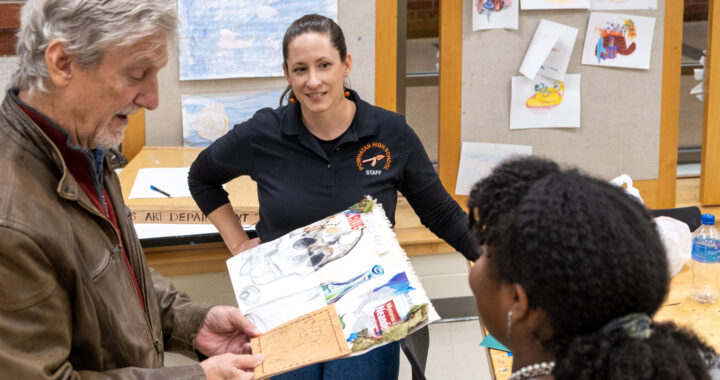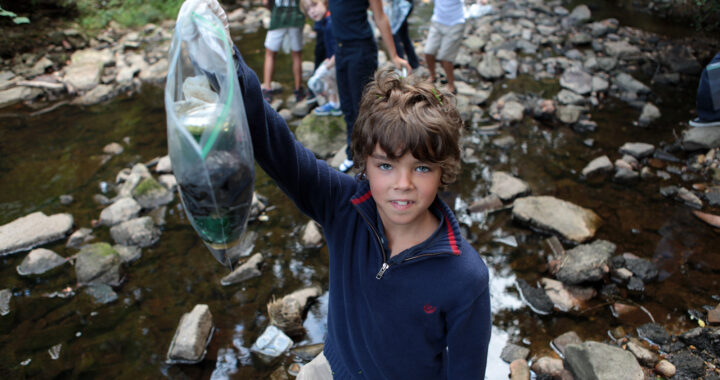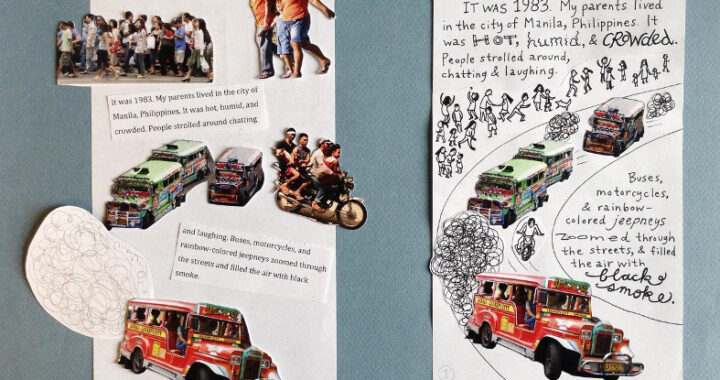It’s good for the soul to spend time with creative teachers and their students. It’s good for students to see their culture reflected in the classroom. It’s good for teachers to integrate their subject matter across the curriculum. Partners in the Arts (PIA) helps make this type of integrated instruction a reality.

Student artwork
At Richmond Public Schools‘ Woodville Elementary, art teacher Teresa Coleman led Woodville: A Community of Promise, a project funded by a PIA Engaging Creative Thinkers (ECT) Award. Integrating visual arts, music, language arts, and social studies, the teachers and visiting artists helped 4th and 5th graders create an original musical production featuring notable figures in Virginia’s past and present. Rosalind C. Taylor, the principal of Woodville, led her school full of positive energy and evident commitment to students’ academic and personal development.
History and Our Story
As Mrs. Coleman wrote in her 2011 grant proposal, “Our primary goal is to use the arts to show students how they are a part of the continuum of history, how history includes the famous and the lesser known, and how history – his story – is actually their stories.” To that end, students learned not only about well-known Virginians, but also about family members and people significant to their school and the Church Hill community. Woodville Elementary’s origins are deep, going back to the early 19th century, when classes were first held in Mount Tabor Baptist Church.
In Mrs. Coleman’s art room, PIA Director Liz Sheehan sat opposite a young girl who was clearly gifted. She used sophisticated strategies to follow instructions while creating a unique piece of art. Liz thought about the fact that when she went to school (speaking of the early 19th century, she joked) there were no art classes. She felt very fortunate to have a family and family friends who valued creativity and all forms of art. Exposure to various mediums and frequent opportunities to be creative and expressive are essential for today’s students.

Teachers can practice many art forms at JOI: movement, drawing, dance, painting, ceramics, music, and spoken word
Letting Teachers Practice
Since 1995, Partners in the Arts has hosted the Joan Oates Institute (JOI), an intensive, creative summer course at the University of Richmond. Teachers get the chance to learn the elements of many different art crafts, including movement, drama, dance, painting, sculpture, creative writing, comic drawing, music, and spoken word. JOI is transformative for many teachers, as it enhances their instruction twofold. First, it gives them the chance to take the perspective of a student: being vulnerable, trying something new, and engaging in hands-on activity to learn. They are able to experience firsthand how the arts can be fun and rigorous at the same time.
Second, JOI gives them time to connect such creative outlets to curricular content. Through discussions with their peers and the teaching artists, educators examine the opportunities for learning. While they often use work time to plans on a specific unit that they will implement in the fall, they also walk away with the sustaining knowledge of how to integrate any art into any subject.
Art can serve as a valuable tool not only for instruction, but also for assessment. Teachers take back strategies and crafts that they can use to teach. But, they also take back those art elements for students to use to create products and demonstrate understanding.
Partners in the Arts (PIA) awarded Engaging Creative Thinkers (ECT) grants to teachers from 1994 to 2021. These grants made possible over 200 innovative, interdisciplinary projects in Richmond area schools. Since then, the PIA consortium has supported both educator professional development and in-school project implementation through the Joan Oates Institute for Integrated Learning.
The ECT Awards provided opportunities for teachers to reach all students across content areas, while developing critical thinking, creativity, collaboration, communication, and citizenship. ECT projects engaged a class, grade-level or, whole school, and connected teachers, students, families, and the community.



Thank you so much for coming by to see us on Friday. The students are so excited and can’t wait to perform their very best on the musical.